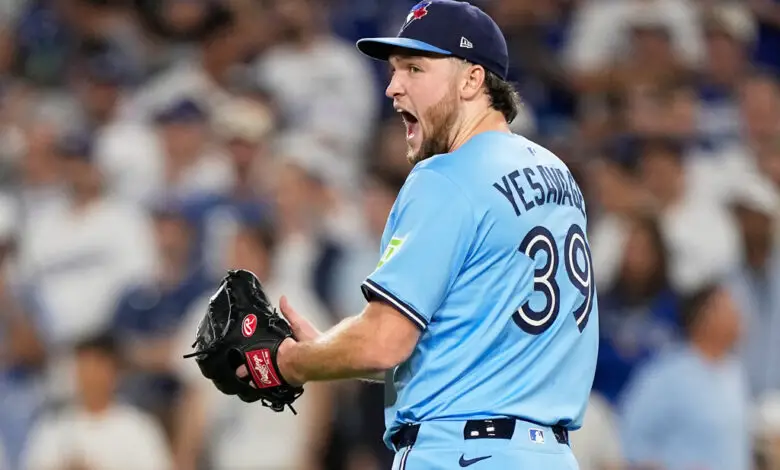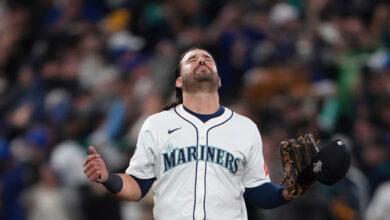
Trey Yesavage Could Change How Cubs, Other Orgs View Pitching Development
Rookie righty Trey Yesavage, the 20th overall pick in 2024 out of East Carolina, began this season in Low-A and ended it by picking up a win as the Blue Jays’ starter in Game 5 of the World Series. He has made five postseason starts for Toronto, two more than he made for them in the regular season after stops at all four of their minor league affiliates. Whether you call it meteoric or improbable, what I’m thinking about his rise is whether and how it impacts the way other organizations view pitching development.
All TWELVE of Trey Yesavage’s strikeouts tonight ? pic.twitter.com/ZrHqxrgUkm
— MLB (@MLB) October 30, 2025
The short answer is that it probably doesn’t, as the combination of circumstance and sample makes a Yesavage redux nearly impossible to duplicate. Paul Skenes never should have pitched in the minors at all, yet the Pirates kept him at Triple-A for seven starts last year. Whatever brain genius decided on that path cost Pittsburgh a draft pick and a year of service time, which is all the more hilarious to me because of their skinflint owner.
Cade Horton presents a similar example, provided he ends up finishing among the top two in NL Rookie of the Year voting as everyone expects. Though the circumstances are a bit different and he’s not nearly the same overwhelming force of nature as his divisional counterpart, Horton was called up too late for the Cubs to benefit from prospect promotion incentives. Had he remained healthy, however, he might have been able to grab a little postseason glory of his own.
Still, Horton’s promotion was born of necessity after the Cubs’ starters began dropping like flies early in the season. There’s an argument to be made that he might have even been sent back to Iowa in early July had the rotation been whole otherwise. After giving up a total of 17 runs (14 earned) over his final four starts in June, there was concern that the rookie might have hit a wall. Then, after seven shutout innings against the Guardians, Horton gave up four to the Twins in 4.2 innings.
He went on to allow seven total runs over his last 12 starts before a fractured rib ended his year prematurely. Between that and the subscapularis strain that shut him down last year, Horton’s journey may provide even more impetus than Yesavage for teams being more aggressive with their pitching promotions. While we’re still talking about only a very small subset of arms here, those that can actually succeed at the highest level despite very little instruction and development in the minors, it comes down to efficiency.
We can save discussion about the state of the game for another time, but the fact of the matter is that today’s pitchers throw harder, nastier stuff than ever before. Unless, that is, you’re one of those radar gun truthers who think David Cone was pumping upper 9s late in his starts for the Mets and Yankees. Those people do exist, just like flat-earthers. Anyway, where was I going with this? Ah yes, pitchers and injuries.
When you take a position that already has a decidedly non-zero injury risk and you add year-round throwing at a young age to the quest for ever-increasing velo and spin, you have a ticking time bomb. Maybe it never goes off, but it’s only a matter of time before most arms eventually blow up to some extent. Wouldn’t you rather have those precious seconds ticking away at the highest possible level rather than essentially being wasted in games that don’t matter? I know I would.
While I don’t believe Yesavage or Horton will prompt an immediate league-wide paradigm shift, we could be at the bleeding edge of a sea change. All it takes is a few more execs to channel their inner Dave Wasserman and say “I’ve seen enough” when a pitcher shows he’s got nothing to prove at a given level. Yesavage made no more than eight appearances for any Toronto affiliate, and even some of those stops might have been overlong given the stupid numbers he posted.
The righty used his funky over-the-top delivery and three-pitch mix featuring a fastball, slider, and splitter that all move a little differently from what most hitters expect. Even though he didn’t maintain his freakish 41% strikeout rate once he got to MLB, punching hitters out at a 26% clip put him well above league average. Yesavage’s stuff plays particularly well at home, where visiting hitters don’t have access to a Trajekt pitching machine that can replicate his delivery and movement.
Now, here’s the big wrinkle in all this: Yesavage will still be rookie-eligible next season because of how late he came up. Therein lies the rub for orgs as they look at when and how to bring young arms up to the bigs. If you don’t bring them up immediately for PPI purposes, you’re better off leaving them in the minors long enough to preserve their rookie status and negate the potential for them to earn service time through awards. Of course, teams with postseason aspirations should be doing whatever makes them better. Leave all that manipulation for the also-rans.
I’d rather avoid delving into the ramifications of MLB’s pending labor strife, so let’s just acknowledge that uncertainty surrounding the next CBA will ultimately drive personnel decisions in the future. Still, what we’re seeing from these young pitchers who come up and shove right out of the gate could influence the way organizations treat prospect development. Maybe the changes are only nominal for an organization like the Cubs, which is still behind the curve despite philosophical changes to their painfully conservative approach more than six years ago.
If you’re looking for a litmus test, the Cubs may have one in righty Jaxon Wiggins, their top pitching prospect and No. 3 overall in the system behind Owen Caissie and Moisés Ballesteros. The Arkansas product has a 70-grade fastball that reaches triple digits, pairing it with a wipeout slider and a strong changeup. Though his strikeout numbers aren’t quite as ridiculous as Yesavage’s and his walk rate makes some a little squeamish, the Cubs might look to be a little more aggressive with a guy who’s already undergone Tommy John surgery.
In the end, I think control concerns and the club’s general MO will keep Wiggins in the minors for most of 2026. His most likely path to the bigs, at least initially, is probably as either an injury fill-in or a late-season reliever who can empty the tank in short outings.
Thanks for joining me on this little thought journey, even if all we did was walk in circles. The offseason can’t get here soon enough for my taste, but it has been kind of nice to coast for a while. Let’s just hope the Jays can take care of business so we can start shoveling coal into the ol’ speculation engine with reckless abandon.

